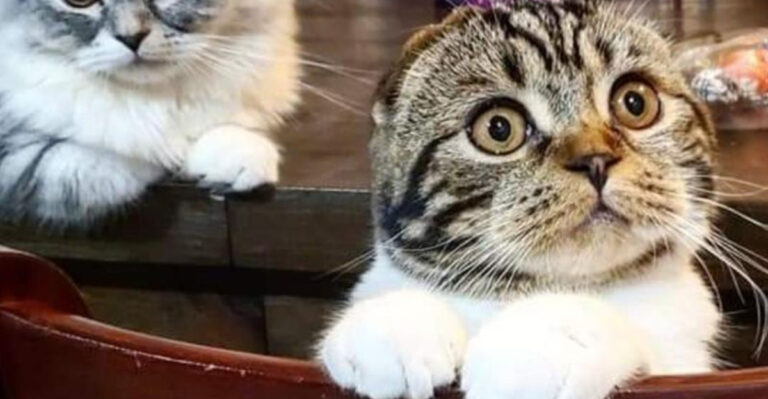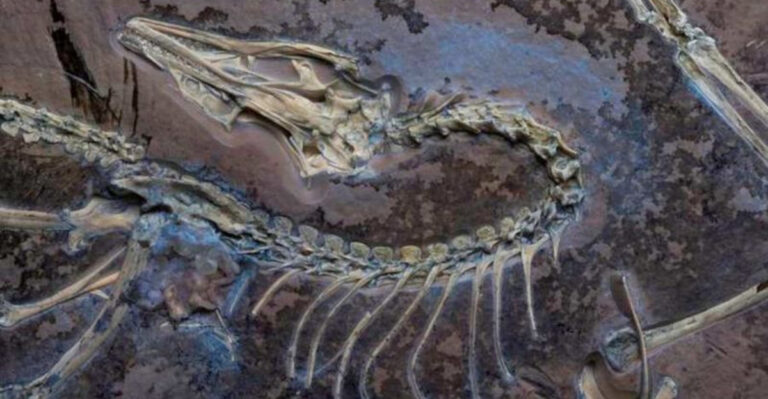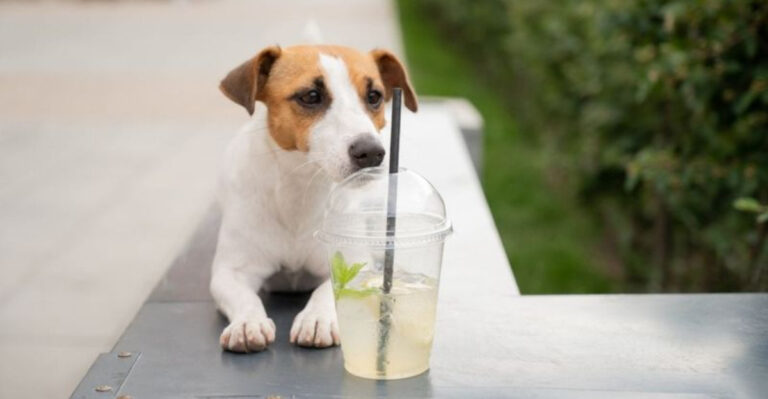13 Signs, Causes, And Remedies For Constipation In Cats
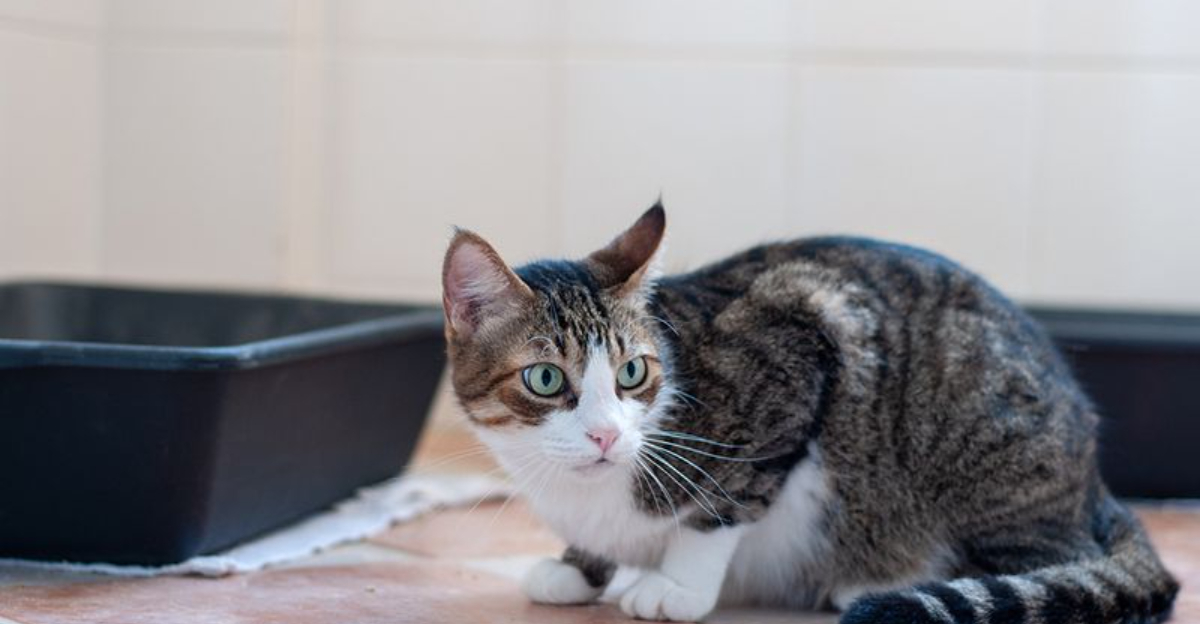
Our feline friends can’t tell us when they’re feeling unwell, so it’s up to us to spot the signs. Constipation in cats is more than just an uncomfortable situation – it can signal underlying health problems that need attention.
Understanding what causes this common issue and knowing how to help your kitty find relief can make all the difference in keeping your furry companion happy and healthy.
1. Straining In The Litter Box

When your cat visits the litter box repeatedly but produces little to nothing, they’re likely constipated. You might notice them crouching for extended periods, meowing in discomfort, or leaving the box without results.
This straining can be mistaken for urinary problems, which are a medical emergency, so careful observation is key. Healthy cats typically defecate once daily, though individual patterns vary.
If the straining continues for more than 24-48 hours or your cat seems distressed, it’s time to call the vet. Don’t wait too long – constipation can worsen quickly in our feline friends.
2. Hard, Dry Stools
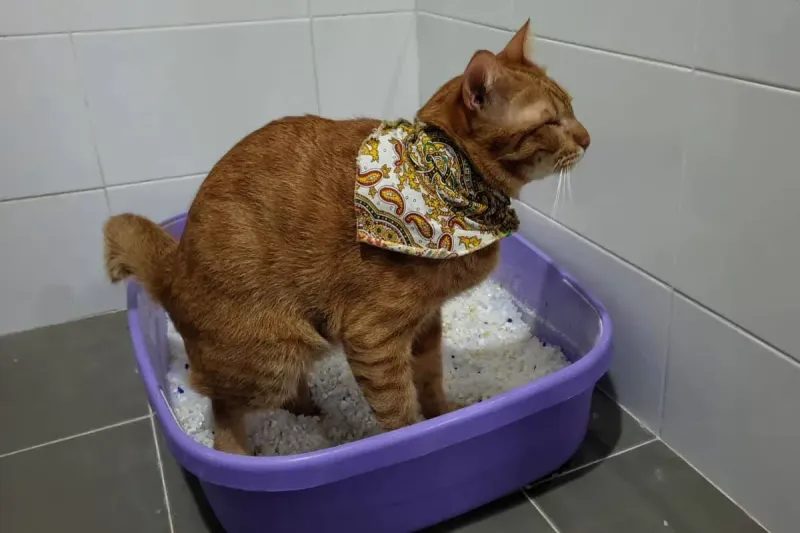
Finding rock-hard, pebble-like droppings in the litter box is a telltale sign of constipation in your feline friend. Normal cat stools should be firm but malleable – about the consistency of clay or playdough.
These dry, compacted poops happen when stool sits in the colon too long, allowing excess water absorption. Your cat might even cry out in pain when passing these uncomfortable pellets.
Watch for small amounts of hard stool or dry, crumbly pieces that look like they took effort to pass. These challenging bathroom visits often lead to litter box avoidance as your kitty associates the box with discomfort.
3. Reduced Appetite Or Lethargy
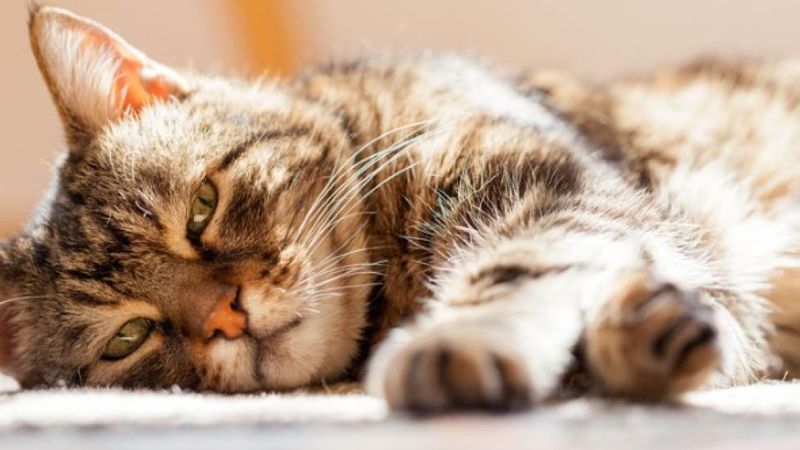
A constipated cat often loses interest in mealtime. That enthusiastic meowing when you open a can? Gone. Instead, your normally food-motivated feline might sniff their meal and walk away, or eat significantly less than usual.
Along with appetite changes comes a noticeable drop in energy. Your playful kitty might spend more time sleeping, show less interest in toys, or move more slowly around the house.
These behavioral changes happen because constipation causes abdominal discomfort and bloating. When your cat’s digestive system isn’t moving properly, they simply don’t feel like eating or playing – much like how we feel sluggish when constipated.
4. Dehydration As A Primary Cause

Cats evolved as desert animals with incredibly efficient kidneys that concentrate urine to conserve water. This evolutionary trait makes them prone to not drinking enough, especially when fed primarily dry food.
You can check for dehydration by gently pinching the skin at the back of your cat’s neck – if it doesn’t spring back quickly, they need more fluids. Sunken eyes and dry, tacky gums are other warning signs.
Chronic mild dehydration leads to harder stools that are difficult to pass. Many cats dislike still water and prefer running sources, which is why some turn their nose up at water bowls but happily drink from faucets or pet fountains.
5. Hairballs Blocking The Way
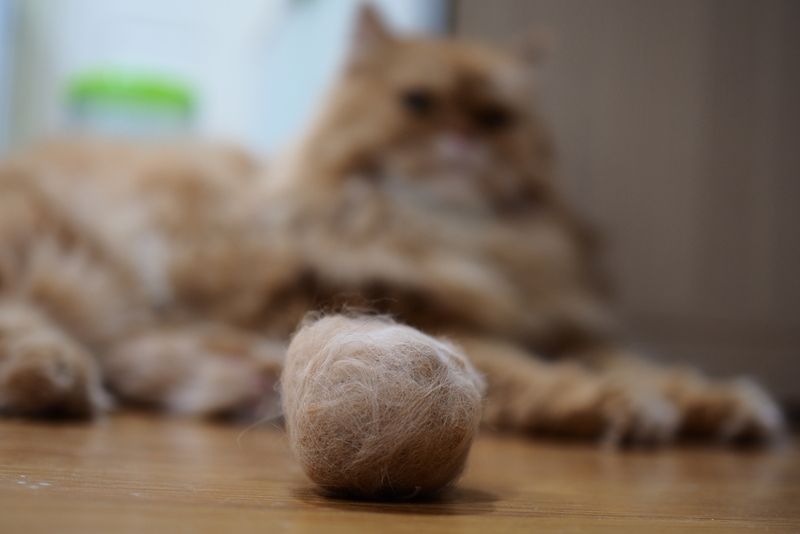
Your cat’s meticulous grooming habit comes with a downside – hairballs can create intestinal blockages. Those rough tongues collect loose fur that cats inevitably swallow, and while some passes through, excessive hair can form stubborn clumps.
Long-haired breeds like Persians and Maine Coons face higher risks, especially during seasonal shedding periods. When hairballs don’t come up as those familiar cigar-shaped vomits, they move the other direction, potentially causing constipation.
Regular brushing dramatically reduces ingested hair. Just 5-10 minutes daily can make a huge difference, particularly for long-haired cats. Special hairball-control foods and lubricating supplements can also help move hair through the digestive tract.
6. Fiber-Deficient Diet
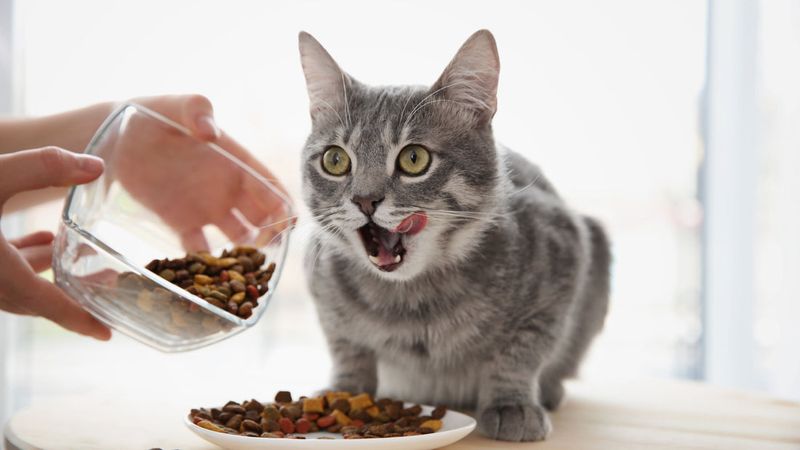
Just like humans, cats need dietary fiber to keep things moving smoothly through their digestive tract. Without adequate fiber, waste moves too slowly, allowing excess water absorption and resulting in hard, difficult-to-pass stools.
Commercial cat foods vary dramatically in fiber content. Some highly processed options lack the natural fiber wild cats would get from consuming prey animals whole – including bones, fur, and stomach contents.
Adding a teaspoon of plain canned pumpkin (not pie filling) to your cat’s food provides gentle, natural fiber. Specialized high-fiber cat foods can help chronic cases, but introduce dietary changes gradually to avoid digestive upset – cats don’t appreciate sudden menu changes!
7. Mobility Issues And Arthritis

Older cats or those with joint problems may struggle with constipation for a surprising reason – it hurts to position themselves properly in the litter box. Arthritis makes squatting painful, causing cats to hold it in rather than face discomfort.
Senior kitties might also have weakened abdominal muscles, making it harder to effectively push waste through. These mobility challenges create a vicious cycle where avoiding defecation leads to harder stools, which become even more difficult to pass.
Low-sided litter boxes provide easier entry for arthritic cats. Joint supplements containing glucosamine and chondroitin can improve mobility, while pain management options from your veterinarian might help make bathroom visits less daunting for your aging feline friend.
8. Medication Side Effects

Several common feline medications list constipation as a potential side effect. Aluminum hydroxide, used for kidney disease, can bind intestinal contents and slow transit. Certain pain medications, particularly opioids prescribed after surgery, notoriously slow gut motility.
Ironically, some medications given for other digestive issues may worsen constipation. Antacids, antihistamines, and some behavioral drugs can also contribute to the problem.
Never discontinue prescribed medications without veterinary guidance, even if you suspect they’re causing constipation. Instead, discuss your concerns with your vet, who might adjust dosages, switch medications, or recommend specific remedies to counteract these side effects while maintaining necessary treatment.
9. Increased Water Consumption As A Remedy
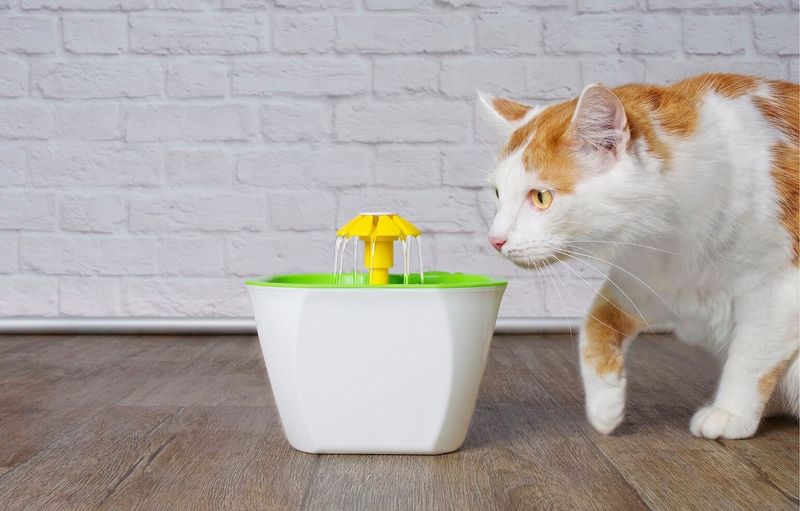
Boosting your cat’s water intake is often the simplest and most effective constipation remedy. Cats naturally have a low thirst drive, so getting creative with hydration strategies makes a big difference.
Try placing multiple water stations throughout your home – many cats prefer their water source separate from food. Adding water fountains caters to their preference for running water, which instinctively signals freshness and safety to their wild ancestors.
Switching to wet food provides significant hydration help, as canned options contain 70-80% water compared to just 10% in dry kibble. For kibble-addicted cats, try gradually mixing in wet food or adding warm water to create a gravy-like consistency that entices them to consume more moisture.
10. Exercise And Environmental Enrichment

A sedentary lifestyle significantly contributes to feline constipation. Indoor cats, especially, need encouragement to stay active, as physical movement stimulates intestinal contractions that keep waste moving through the digestive tract.
Interactive toys that trigger hunting instincts – wand toys, laser pointers, or puzzle feeders – get your cat moving while providing mental stimulation. Even 5-10 minutes of play several times daily can improve digestive health.
Vertical space like cat trees encourages climbing and jumping, engaging different muscle groups. Window perches with bird feeders nearby provide entertainment and encourage movement between viewing spots. Remember that physical activity benefits not just your cat’s digestive system but their overall health and happiness.
11. Laxatives And Stool Softeners
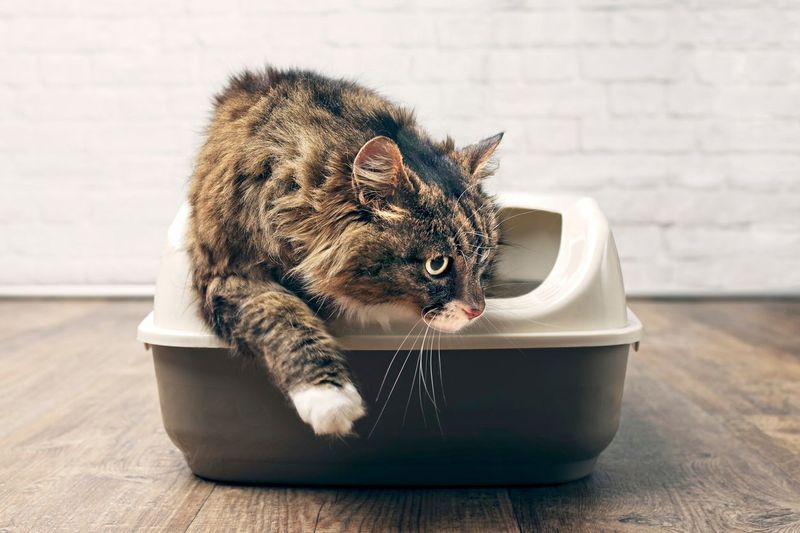
Over-the-counter cat laxatives come in several forms, each working differently to provide relief. Lubricant laxatives like petroleum-based gels help stool slide through the intestines more easily but should only be used short-term.
Osmotic laxatives draw water into the colon, softening stool and increasing volume. These include lactulose and Miralax (polyethylene glycol), which must be dosed carefully for cats.
Never give your cat human laxatives without veterinary approval. Products containing stimulant ingredients can cause dangerous intestinal cramping in felines. For occasional constipation, your vet might recommend a small amount of unflavored Miralax mixed into wet food, but always get professional guidance on appropriate dosing for your specific cat.
12. When To Seek Veterinary Care

Immediate veterinary attention is needed if your cat hasn’t produced stool for more than 48-72 hours or shows signs of distress – vomiting, crying, lethargy, or complete loss of appetite. These could indicate a dangerous blockage requiring professional intervention.
Straining without producing urine is a life-threatening emergency, as it may signal urinary blockage rather than constipation. Male cats are particularly vulnerable to urinary obstructions that can quickly become fatal.
Chronic or recurring constipation warrants veterinary investigation to identify underlying causes. Serious conditions like megacolon (where the colon becomes stretched and loses muscle tone) require specific medical management. Don’t delay seeking help – constipation becomes harder to treat the longer it persists.
13. Underlying Medical Conditions
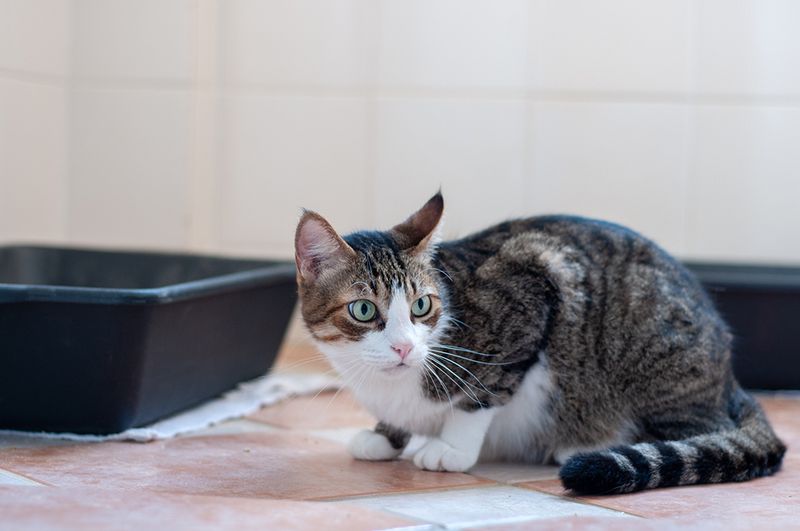
Constipation sometimes signals more serious health issues requiring diagnosis and treatment. Kidney disease, common in older cats, leads to increased urination and dehydration, contributing to constipation. Thyroid disorders can slow digestive transit, while diabetes affects gut motility and hydration status.
Intestinal tumors or strictures physically obstruct normal passage of stool. Neurological conditions may interfere with the nerves controlling defecation, making it difficult for cats to coordinate the muscles needed for bowel movements.
Pelvic injuries from past trauma, even years earlier, can cause narrowing that makes passing stool difficult. Comprehensive veterinary examination, possibly including x-rays or ultrasound, helps identify these underlying causes when constipation becomes a recurring problem.

